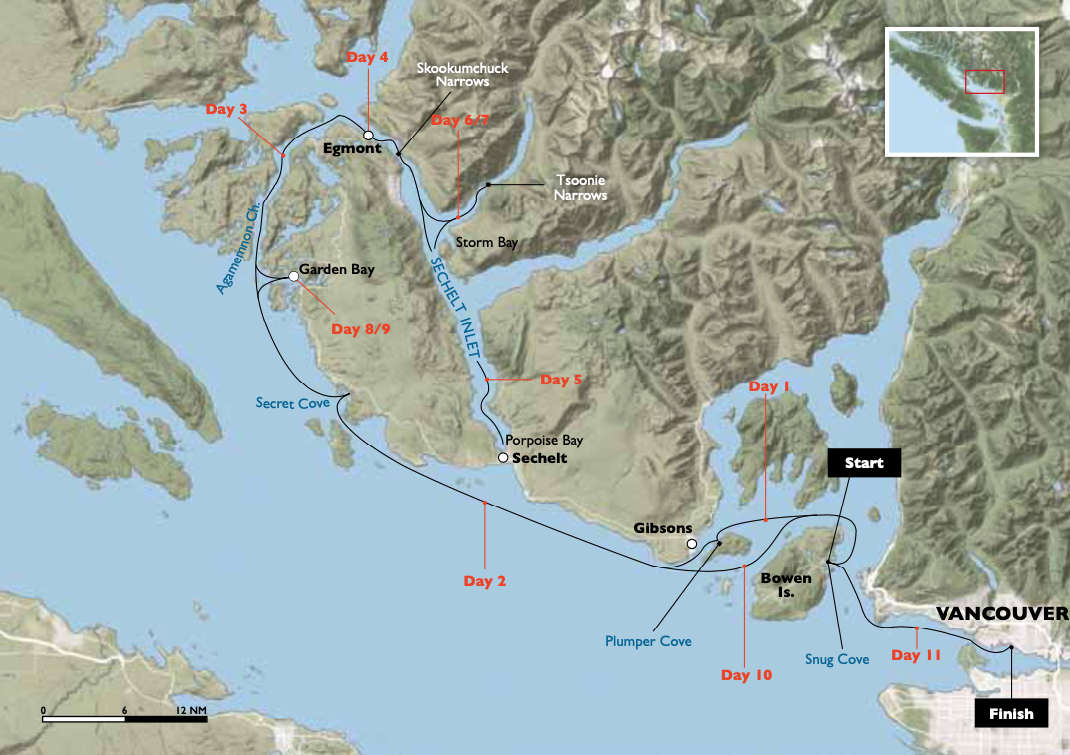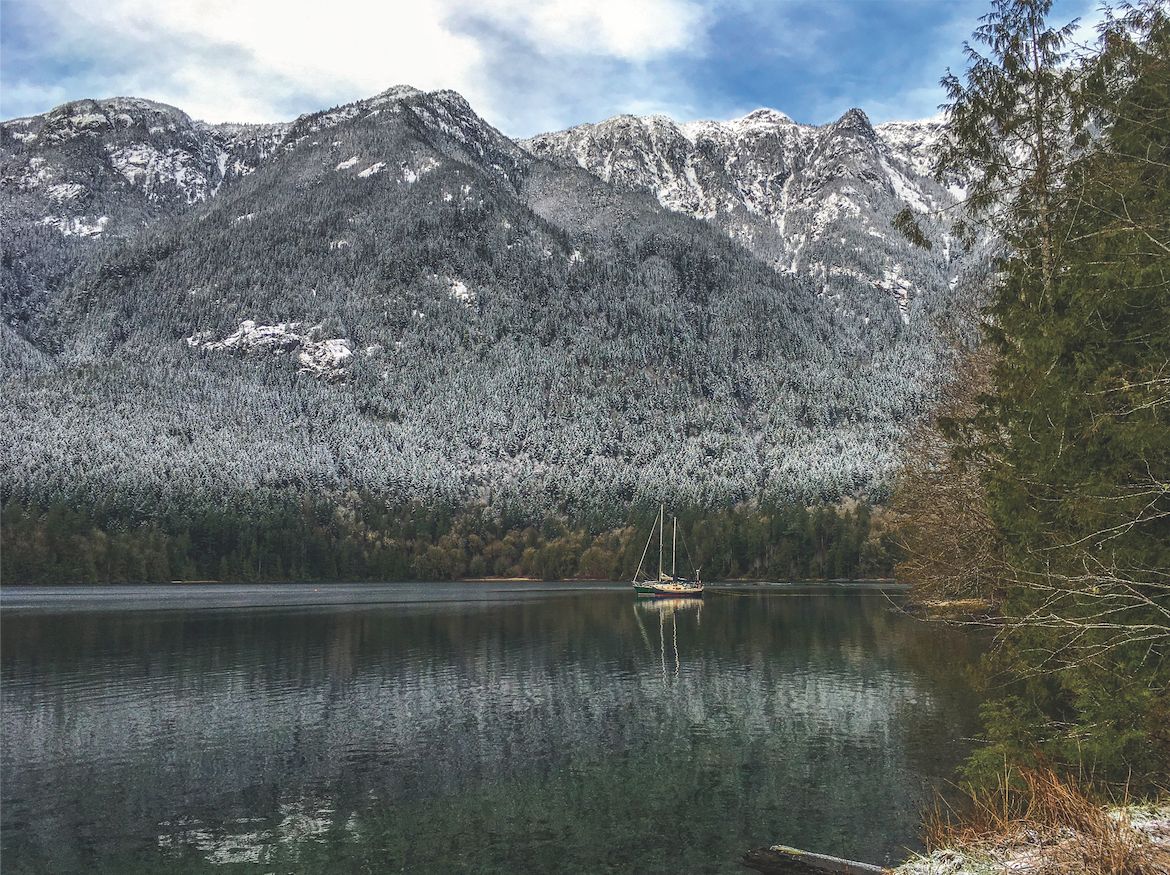
The woodstove was crackling, the Christmas cookies were in the oven, and December snow had been falling for a few days. Michael and I were warm and dry while visiting my parents on Bowen Island. Then our friend Candice asked if we would cruise with her to Princess Louisa Inlet on Boxing Day. It didn’t take much thought, we never say no to sailing. Heron, my Dana 24, was tied up at the dock on Bowen. I’d never been up Agamemnon before, let alone all the way up the reaches. My mom asked if perhaps this was a trip we should only try with local knowledge (how do you acquire local knowledge?). Boxing Day dawned snowy and bright, the fridge was packed full of turkey. Hot water melted the mooring lines from the dock. We had a lot to learn.
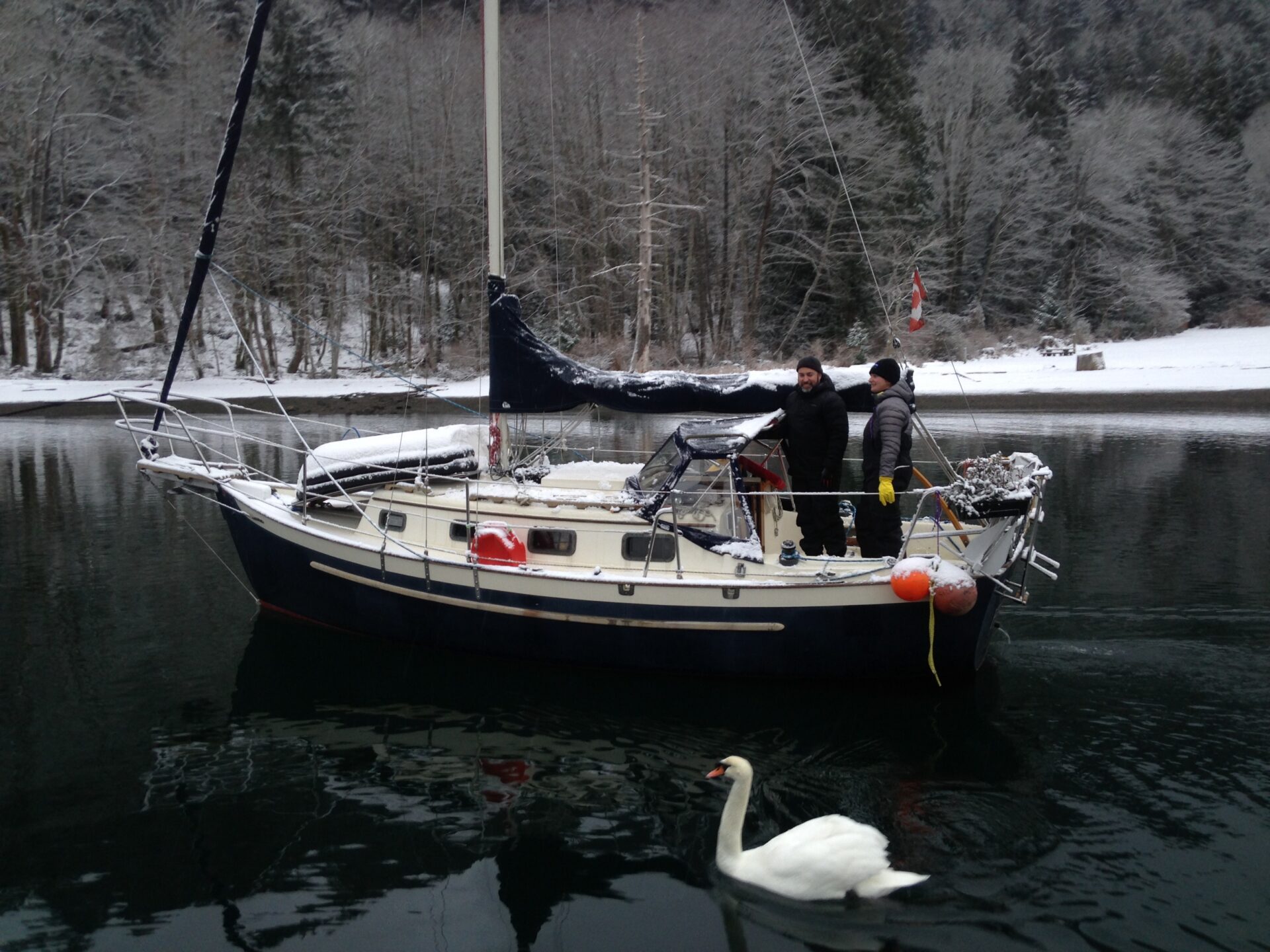
Day 1: Snug Cove to Plumper Cove Candice was single-handing her 34-foot Ontario sloop, there was a gale warning in the Strait of Georgia, so our planned run to Secret Cove was put on hold. It was good to have a shakedown cruise anyway. Unsurprisingly we had the dock at Plumper all to ourselves. The weather for the next day looked better for our run north.
Day 2: Plumper Cove to Secret Cove The updated weather forecast looked good so we pushed off shortly after sunrise. The sails went up as we entered the strait and with a beautiful following wind I watched the clouds closely and we were lucky enough to miss all of the squalls. I’d never ventured into the hidden arm to the east in Secret Cove. Aiming for shore and waiting for the gap to appear was certainly strange. Candice was so busy taking pictures of the narrow entrance that she almost hit the channel marker.
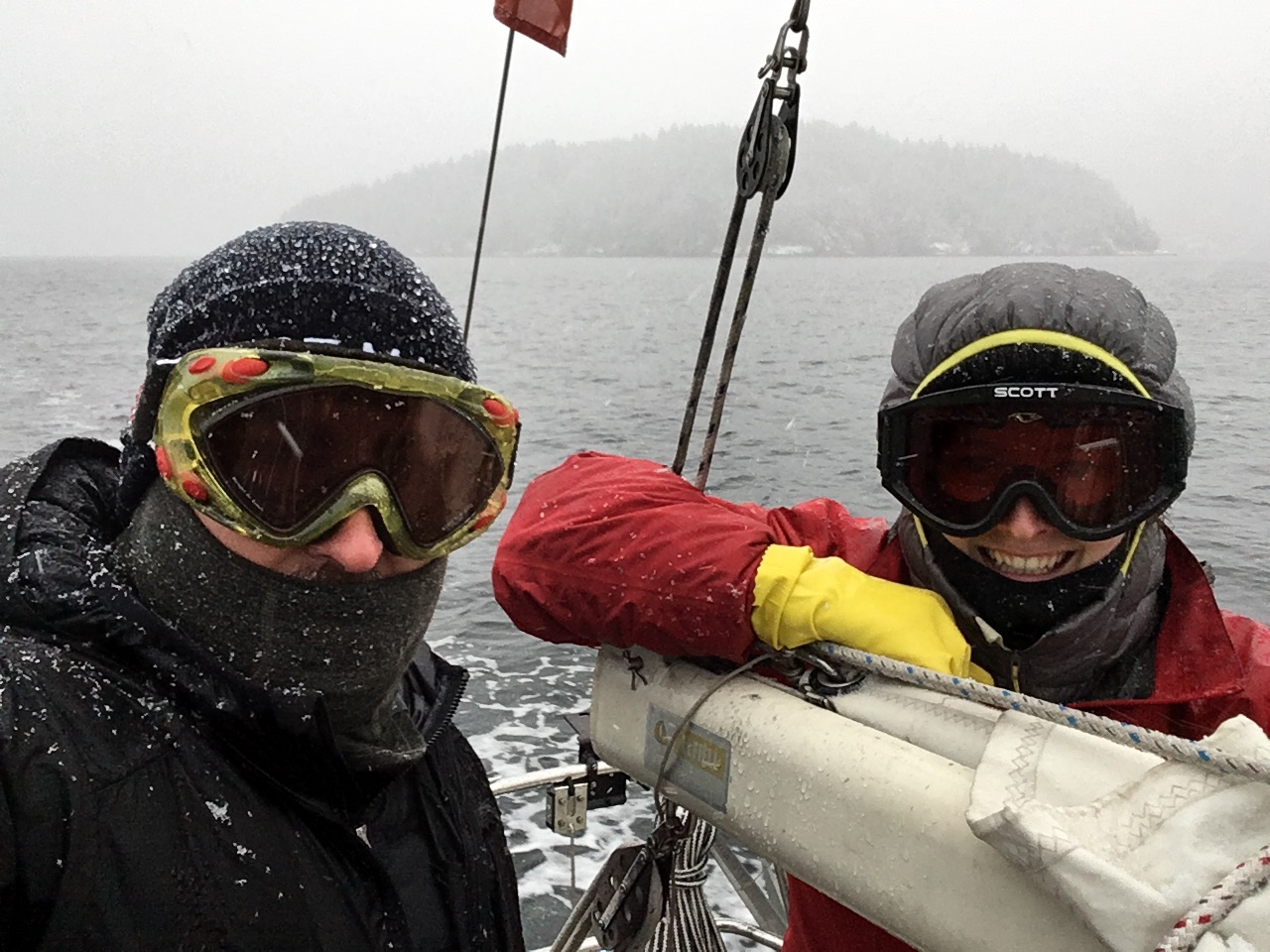
Day 3/4: Secret Cove to Egmont Leaving Secret Cove the gusts started topping 15 knots. Michael and I put a reef in the main and we could see Candice looking a bit confused. Shortly after that she met a gust and rounded up. A reef went in pretty quickly after that. The run downwind was spectacular. We sailed past Pender Harbour before the wind died. The motor up Agamemnon was slow and cold, but beautiful. We stopped at the Backeddy Pub and made plans for the run up to Princess Louisa the next day. Sunrise would be at 08:00, sunset at 16:30, and slack tide at 16:00. The cold winter meant the inlet might be frozen, we really weren’t sure. Scouring the charts and the cruising guides we couldn’t find anywhere to anchor en route that would offer real protection from the outflow that had been blowing through the inlets—it would be a straight run of over 40 miles. I went to sleep thinking about speed and time and unknown waters in the dark.
The outflow picked up overnight and we spent the night hobby-horsing in a steep chop. I got up to check the lines a few times and just to stare at the chop coming straight down the inlet. In the pre-dawn light we met to plan the day. No one had had much sleep. The wind continued to blow and we continued to bounce. With such a headwind we wouldn’t make slack at the narrows, and as dark would be fast approaching we’d have trouble finding a place to hole up. We decided to change plans.
After a short nap we pulled around the corner into the Egmont Government Dock. The calm was beautiful. We spent the day poking around town (closed up for the season other than the grocery store), and walking out to look at Skookumchuck Narrows. We were there close to slack on a small tide but nonetheless enjoyed the swirls, and we tossed pinecones in to watch the flow. None of us had been through the narrows so we took the chance to look at the islands and routes from shore. That night we had dinner with the other boat at the dock. They’d come down from Princess Louisa that day and said the snow caused a total white out, and while the water inside wasn’t frozen solid it was thick slush. We checked the tides for Skookumchuck Narrows the next day and double-checked the charts and cruising guides for routes.
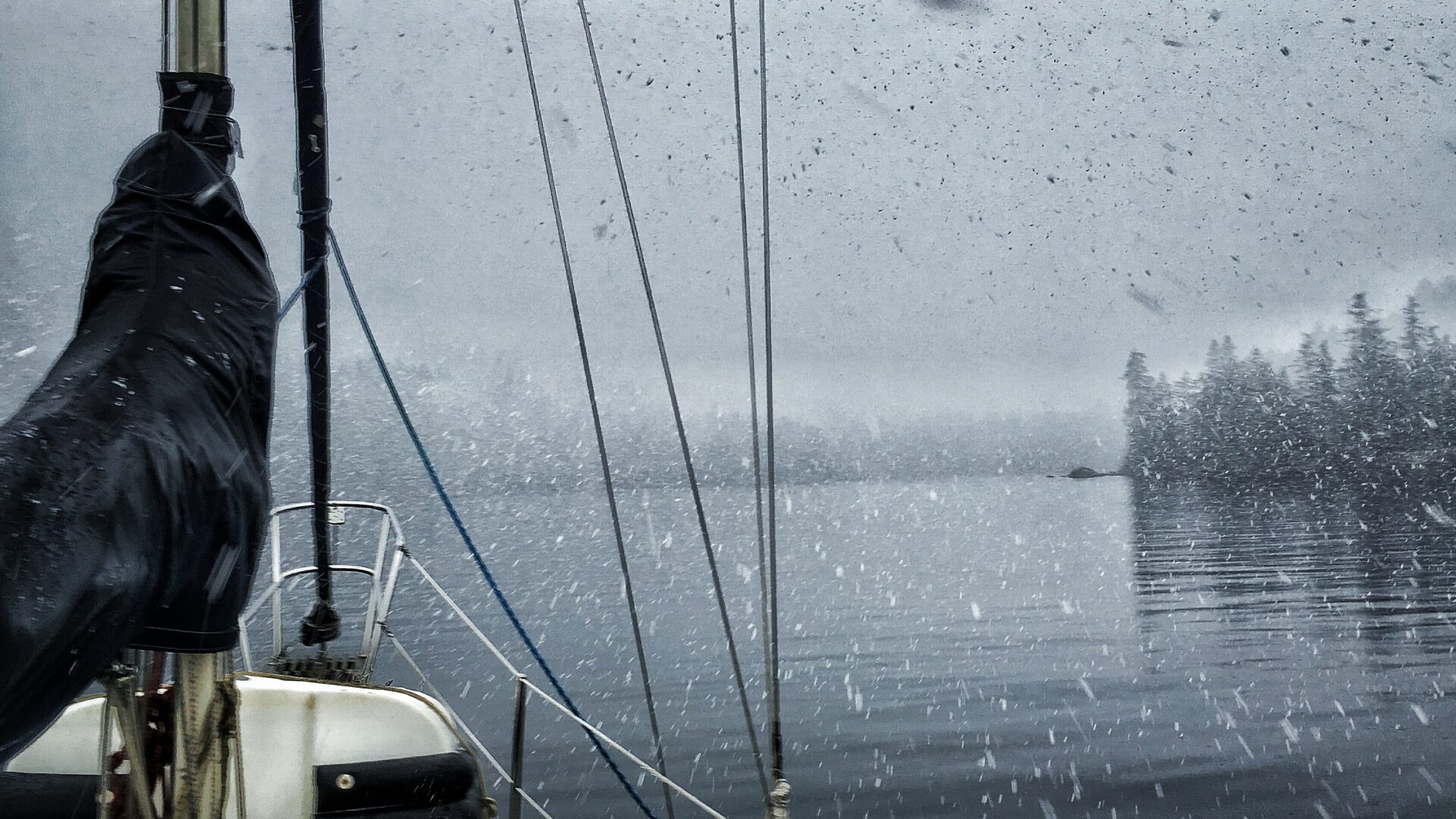
Day 5: Egmont to Porpoise Bay Going through Skookumchuck, the tide would be changing against us, so I wanted to make sure we weren’t late. Entering right at predicted slack I was startled to find the current still whisked us along. With a hull speed of 5.5 knots we found ourselves making almost 10 knots over the ground. It was not a proud moment. Thankfully, we didn’t get into any swirls and we both followed the plan we’d laid out before hand, staying well clear of all the rocks and headlands. The cruise from there to Porpoise Bay was still, beautiful, and uneventful. We refuelled and tried to figure out where to stay. The dockmaster at the Lighthouse Pub was on vacation, and no one seemed sure if there was any space for us. In the end we went to the Government Dock, borrowed someone’s spare key and tied up in two spots the neighbours said were free. Someone pointed out the water taxi had all the paint scratched off her bow and a few sizable dents—apparently it was frozen solid past Tsoonie Narrows.
Day 6: Porpoise Bay to Tsoonie Narrows A slow start with a good breakfast, New Years Eve. The wharfinger told us about a local spot to tie up, but said to make sure we didn’t step on anyone’s toes. The day was dead calm, but the radio had a mainland inlets outflow warning, I wasn’t quite sure how that would affect us, but I did know I wanted to be somewhere protected. Snow fell off and on, mixed with some less pleasant slush. As we rounded the corner toward Tsoonie Narrows it started snowing in earnest. The shore disappeared and the silence thickened. We spun through Storm Bay, a place I’d been to years before with family friends, but the shoreline looked threatening through the snow, all cabins and no trespassing signs. The spot the wharfinger had suggested was full of locals out for New Years so we moved on. Right before the narrows there was a bit of an outcrop that would get us out of the way of the majority of a freight train outflow. We rafted with two anchors and a stern tie. It felt secure so we went for a bit of an explore and then had a fancy New Years dinner with duck confit and mimosas with cocktail umbrellas. We stayed up until midnight, lit some sparklers then and slept like the dead.
Day 7: Sechelt Inlet The first morning of 2017 was clear and bright with wind howling through the trees. The stern tie was taking more and more pressure—time to leave. Candice untied first and swung around her anchor. We took up the stern tie and raised anchor quickly before we swung ashore. We motored the short distance to the local’s tie-up and were relieved to find only one boat left. We made ourselves at home as the gusts roared down the inlet. I thought about the extra four knots we’d gained coming in Skookumchuck and decided to pull out the government issued hydrographic tables. Slack tide was a full 40 minutes later on the government tables than it was on Navionics.
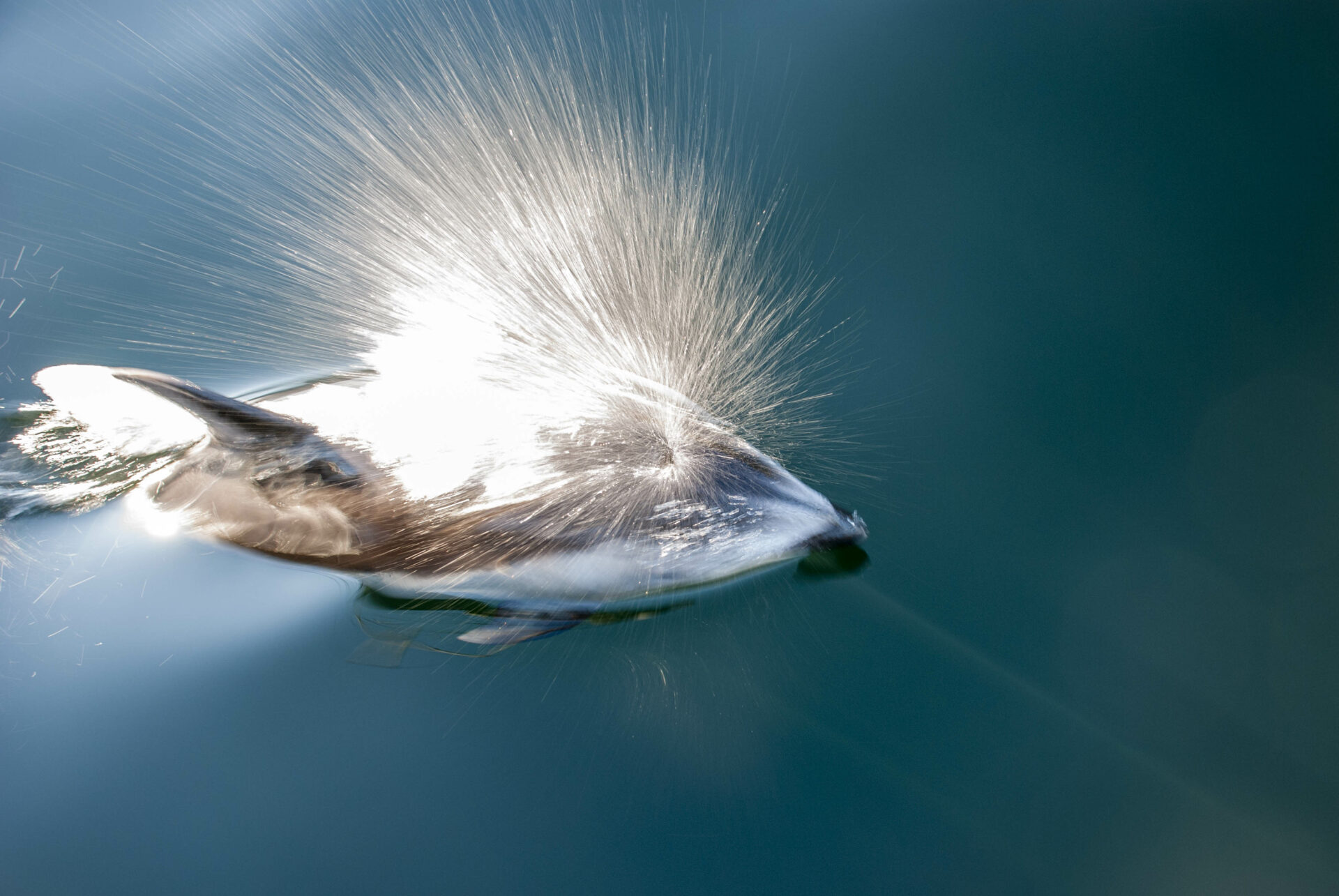
Day 8: Sechelt Inlet to Garden Bay The wind had died overnight and we woke to snow glistening on trees. There was a strange splash shortly after we left, and a noise I didn’t recognize, but Michael did. He had his camera ready the next time the dolphin came up in our wake. A beautiful solitary Pacific whitesided dolphin played with us for over an hour. Breaking the surface under the bowsprit (Michael got covered in dolphin snot) and jumping in the wake, I’ve never felt so much as though a creature was just as intelligently interested in us as we were in it. As we approached Skookumchuck our dolphin disappeared. Passing through 40 minutes after Navionics slack (and right on government slack) we experienced little more than a gentle ripple. The run down to Garden Bay was easy with the chop at Egmont (presumably from the wind the night before) quickly calming down. Arriving in Garden Bay the ice was thick and we discovered that standing on the bowsprit lowers the bobstay into the water, letting that break the ice instead of the nice navy gelcoat. The plan was to be up before dawn the next day (so around 07:30) and leave as soon as the light was enough to navigate the crab traps that infest the bay.
Day 9: Garden Bay Well it didn’t go as planned. In the predawn light we broke enough ice to get Heron moving, and we had warm chocolate croissants that Candice produced from a secret cupboard. But when it came time to start up, Candice found her throttle cable was frozen. We put a hairdryer to the cable and tried tapping it with a small hammer. Candice was smart enough to decline the offer of a big hammer. Eventually we decided to get the boat as hot as possible, with the access into the engine compartment open, and just give it some time. Around noon the throttle cable came loose and she started up the engine. We decided to spend the day holed up as the weather in the strait was holding.
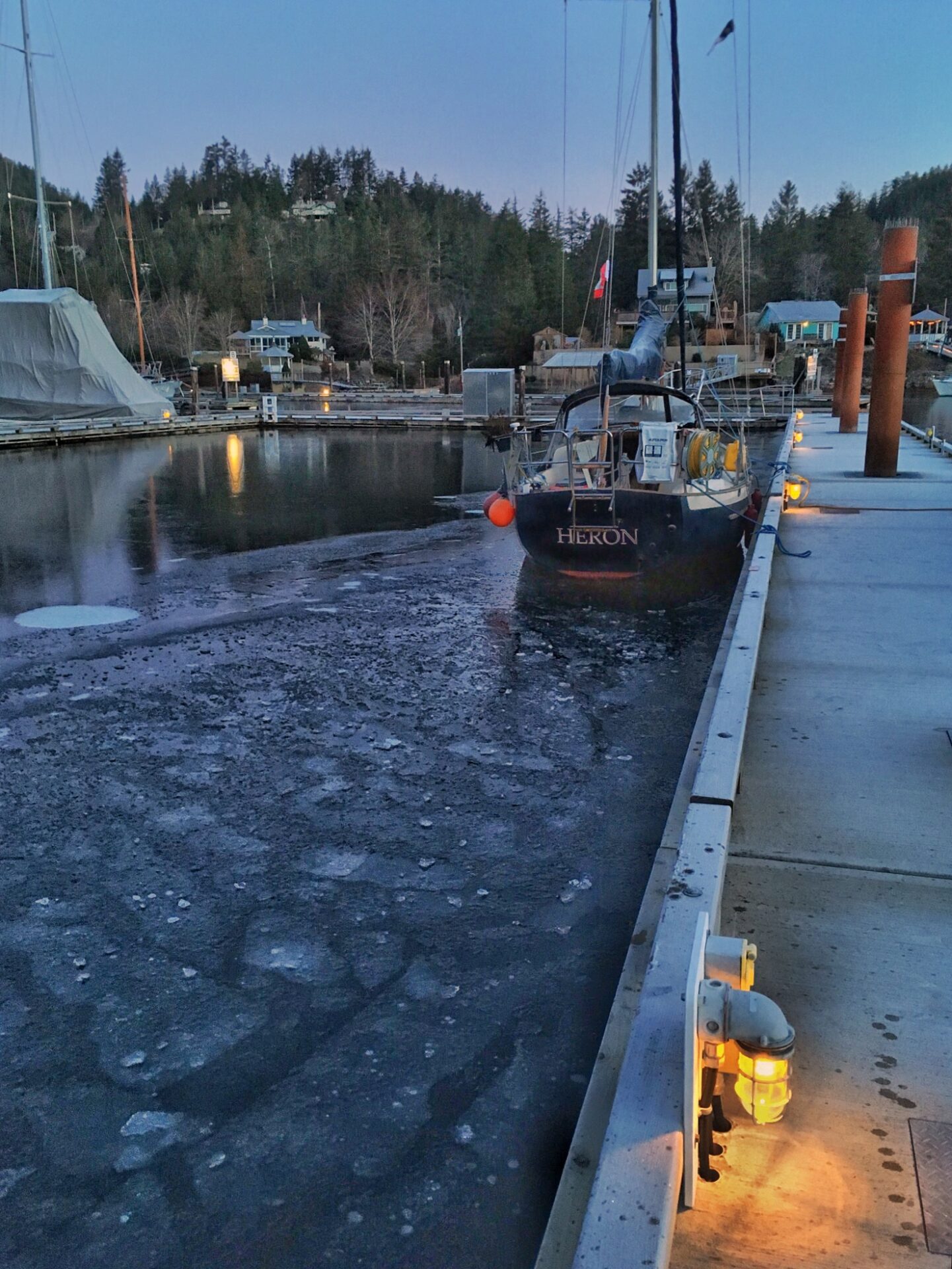
Day 10: Garden Bay to Snug Cove The next day we watched tensely as Candice started up her engine. Both her and the engine had had a very warm night with the heater running full blast, all went well and we wove our way out of the bay in the early morning light. The wind was light and conditions were good so Candice waved farewell and opened up her throttle. She has a half-knot on us that she’d kindly been holding back, and decided to push through to Vancouver instead of lazing along with us. It was brutally cold before the sun hit and Michael and I took turns down below with the heater, making fresh mugs of hot tea. We went around the north end of Bowen (a choice that adds at most 10 minutes and is almost always more comfortable), and tucked into the dock. First order of business: Hot showers, a bed ashore, and a reassurance to my mom that we weren’t dead.
Day 11: Snug Cove to Vancouver Harbour Approaching First Narrows I called the marina. They said the ice was quite thick up C dock, and no they couldn’t break it up (the marina boat had been holed the day before breaking ice). We were offered a slip out at the edge where the water is less brackish and the wakes of passing boats keep things open. We tied little Heron up in a 60-foot slip surrounded by big beautiful boats that wouldn’t leave the dock until spring. Sure the trip had been a bit cold, but I’ve never been more proud of us or the boat, and the beauty was unlike anything I’ve ever seen on the coast before.
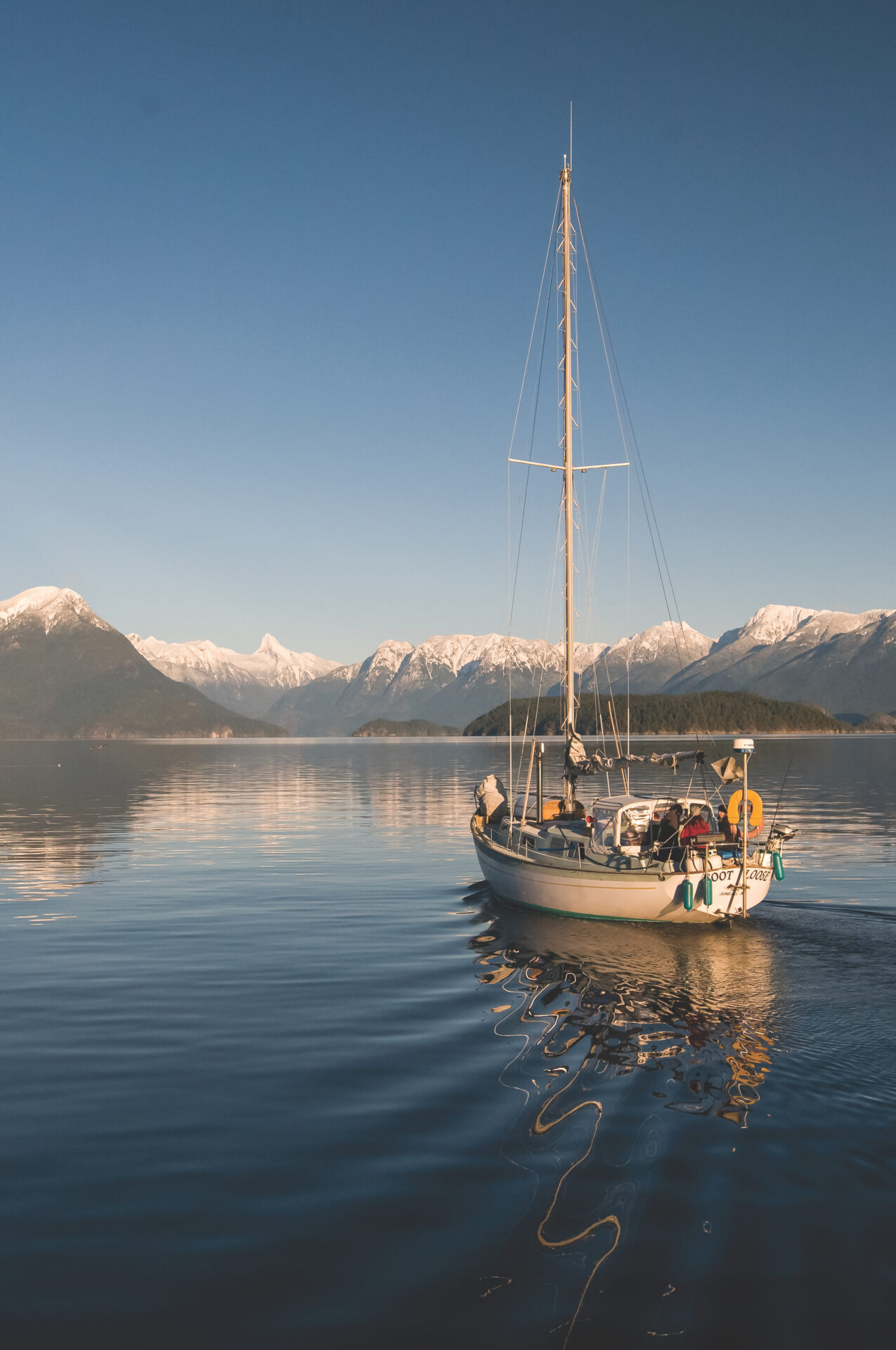
8 Tips for Winter Sailing
Lesson 1: Don’t be in a hurry. Winter weather changes faster and more furiously than summer weather.
Lesson 2: The short days are real. Some things just aren’t possible with eight hours of usable light.
Lesson 3: Even the things you didn’t think closed for the season might be closed. Call ahead and have fall-back plans.
Lesson 4: The Canadian hydrographic tables are the official, researched, scientific source for tides. I will never trust another source for serious passes again.
Lesson 5: You will be alone. Having a buddy boat is very reassuring. If mechanical issues happen in a secluded spot it could be a long time before help comes within radio range. We have a SPOT tracker for added reassurance.
Lesson 6: Carry way more fuel and food than you might need.
Lesson 7: Stay warm!
Lesson 8: Be proud.
